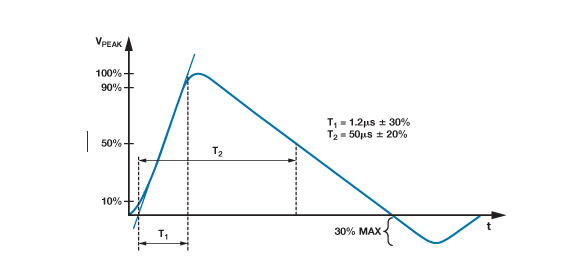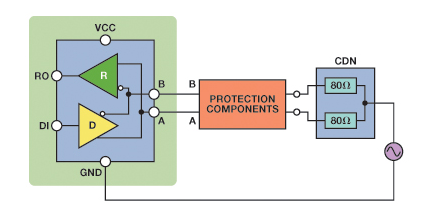One of the protections in industrial routers is often referred to as “anti-surge (EMC)”. There are many reasons for a surge. A surge is a spike pulse with a high rising speed and short duration. Grid overvoltage, switch ignition, reverse source, static electricity, motor/power supply noise, etc. are all factors that cause surges. The surge protector provides a simple, economical and reliable protection method for power surge protection of electronic equipment.
What is a surge transient?
Surge transients are caused by overvoltages caused by switching or lightning transients. Switching transients can be caused by power system switching, load changes in the distribution system, or various system faults such as short circuits. Lightning transients can be the result of high currents and voltages injected into circuits by nearby lightning strikes. IEC 61000-4-5 defines the waveforms, test methods and test levels used to evaluate immunity against these damaging surges.
These waveforms are assigned to the output of the waveform generator in terms of open circuit voltage and short circuit current. Two waveforms are described. The 10/700 µs combined waveform is used for testing ports intended to be connected to symmetrical communications lines, such as telephone switched lines. In all other cases, especially in short-distance signal connections, a 1.2/50 µs combined waveform generator is used. For RS-485 ports, the 1.2/50 µs waveform is primarily used, which is discussed in this section. The effective output impedance of the waveform generator is 2Ω. Therefore, surge transients have high currents associated with them.

The graph above shows a 1.2/50 µs surge transient waveform. ESD and EFT have similar rise times, pulse widths and energy levels. However, the surge pulse has a rise time of 1.25 µs and a pulse width of 50 µs. In addition, surge pulse energy can reach nearly 90 J, which is three to four orders of magnitude greater than the energy of ESD or EFT pulses. Therefore, surge transients are considered the most severe EMC transients. Due to the similarities between ESD and EFT, the design of circuit protection may be similar, but the surge must be handled differently due to its high energy. This was one of the main issues in developing protection that improves the data port’s immunity to all three transients while remaining cost-effective.

Resistors couple surge transients onto communication lines. The above diagram shows the coupling network of half-duplex RS-485 devices. The total parallel sum of the resistors is 40. For half-duplex devices, each resistor is 80.
During the surge test, five positive pulses and five negative pulses are applied to the data port with a maximum time interval of one minute between each pulse. The standard states that equipment should be set up under normal operating conditions during testing.